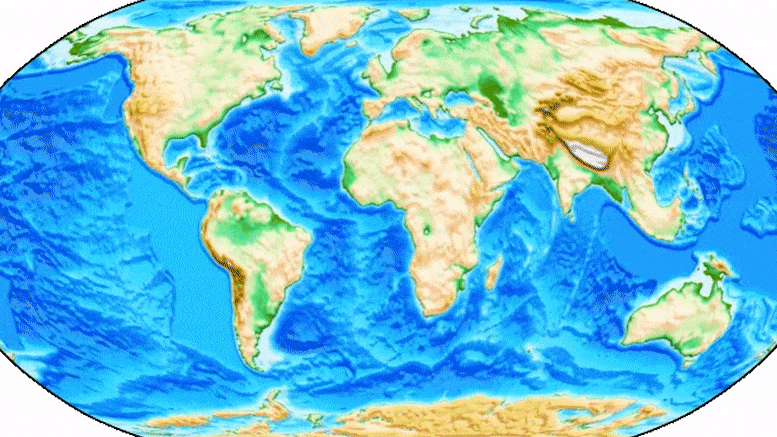New research has revealed that movements in Earth’s tectonic plates have a significant impact on the biodiversity of marine species. Scientists have discovered that these plate movements indirectly stimulate bursts of biodiversity through 36-million-year cycles by causing sea levels to rise and fall. The study, led by Associate Professor Slah Boulila from Sorbonne University in Paris, suggests that these geological cycles, which can be traced back 250 million years, play a critical role in shaping marine species diversity.
The researchers found that as water levels rise and fall due to tectonic plate movements, different habitats on the continental shelves and in shallow seas expand and contract. This provides opportunities for organisms to thrive or die, leading to bursts of new life emerging. By studying the fossil record, the scientists were able to identify these shifts and their impact on marine biodiversity.
The study, published in the journal Proceedings of the National Academy of Sciences, challenges previous notions of species evolution. It provides overwhelming evidence that tectonic cycles and global sea level changes, driven by Earth’s dynamics, have played a crucial role in shaping the biodiversity of marine life over millions of years.
According to Professor Dietmar Müller from the University of Sydney, the 36-million-year cycle is a result of alterations between faster and slower seafloor spreading, leading to cyclical depth changes in ocean basins and the transfer of water into the deep Earth. These fluctuations in flooding and drying up of continents, along with periods of extensive shallow seas, foster biodiversity.
The research was made possible by the GPlates plate tectonic software, developed by the EarthByte Group at the University of Sydney. This software, supported by Australia’s National Collaborative Research Infrastructure Strategy (NCRIS) via AuScope, enabled the scientists to analyze the strikingly similar cycles in sea-level variations, Earth’s interior mechanisms, and marine fossil records.
One example of how sea-level changes have shaped ecosystems and influenced biodiversity is the Cretaceous Winton Formation in Queensland, Australia. This formation, known for its collection of dinosaur fossils and precious opal, provides a window into a time when much of the Australian continent was flooded. As sea levels rose and fell, the flooding created expanding and contracting ecological recesses in shallow seas, offering unique habitats for a wide range of species.
The findings of this research highlight the profound impact of sea-level changes on biodiversity and challenge previous ideas about species evolution. They demonstrate the intricate interplay between plate tectonics and sea level variations, shaping the Earth’s geography and influencing the diversity of marine life over millions of years.

What insights does the study provide on the role of geological cycles in shaping marine species diversity and the connection to tectonic plate movements
Sciences, unveils the connection between Earth’s tectonic plate movements and the diversity of marine species. Researchers at Sorbonne University, led by Associate Professor Slah Boulila, have discovered that these plate movements indirectly trigger bursts of biodiversity, occurring in 36-million-year cycles, by influencing sea level changes.
The research provides crucial insights into the role of geological cycles, dating back 250 million years, in the shaping of marine species diversity. It reveals that as tectonic plate movements cause fluctuations in water levels, various habitats on the continental shelves and in shallow seas expand and contract. This dynamic environment creates opportunities for organisms to flourish or perish, consequently leading to periods of heightened biodiversity.
To understand the impact of these shifts on marine biodiversity, the scientists examined the fossil record. Through their analysis, they were able to identify the connection between tectonic plate movements and the emergence of diverse marine life.
The study’s findings, published in the Proceedings of the National Academy of Sciences, shed new light on the intricate relationship between Earth’s tectonic activity and the evolution of marine species.



This groundbreaking study highlights the crucial role of plate tectonics and sea level changes in shaping biodiversity over 250 million years. A fascinating insight into the intricate relationship between Earth’s geology and the explosion of life forms.